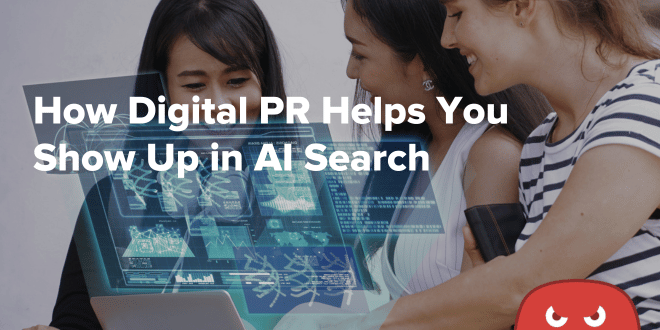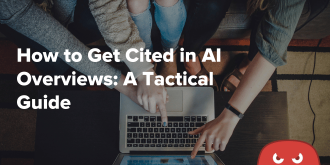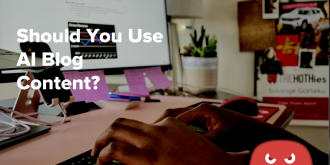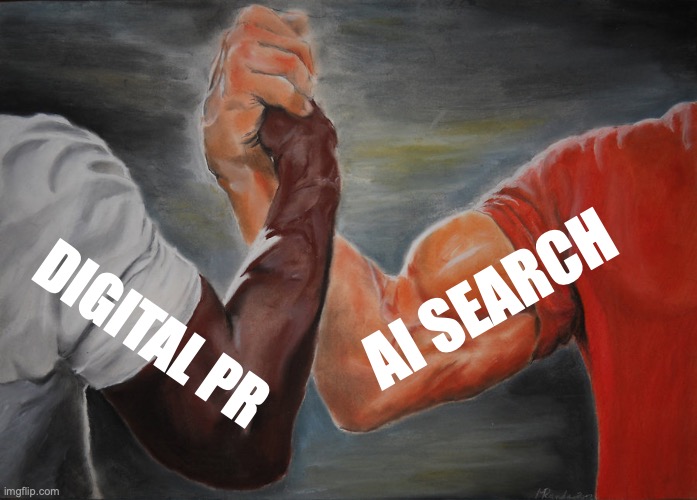Quick Links
Now that AI-powered search is everywhere you look (even on Google), brands must adopt a new set of marketing tactics.
This is because LLMs (large language models) and search algorithms favor different things when ranking results and generating summaries, although there is some overlap.
Where search algorithms value things like high-authority backlinks and content quality, AI tools focus more on brand mentions, reviews, and author credibility.
How can you keep up?
Using digital PR for SEO and GSO (generative AI search optimization) will help you achieve the best of both worlds.
Digital PR is all about:
- Generating natural brand mentions and backlinks from high-authority sites
- Creating thought leadership content
- Conducting interviews and sharing expert quotes
- Networking with online journalists and media outlets (for more coverage and brand awareness)
These techniques will dramatically boost your visibility on AI tools (ChatGPT, Perplexity, Claude, etc.) and search engines (Google and Bing).
However, even traditional search engines have AI thrown into the mix now, with Google’s AI Overviews and Bing’s Copilot.
According to a recent study, brands that appear in AI Overviews receive 3.2x more clicks than brands that don’t.
Since AI search is now prime marketing real estate, brands can no longer afford to ignore it.
This guide will teach you how to master digital PR for SEO and GSO, so stay tuned!
What AI Looks for When Selecting Sources
When you search for something on Google, its sophisticated search algorithm uses over 200 ‘ranking factors’ to determine which content is the most relevant, useful, and accurate.
Ranking factors are a set of criteria that reflect the quality and trustworthiness of online content.
Some examples include:
- Content quality (Google uses the E-E-A-T system)
- Backlinks (Google views links from reputable websites as a trust signal)
- User experience (fast loading speed and logical site architecture)
- User engagement signals (click-through rate, dwell time, bounce rate, etc.)
If your ranking signals are top-notch, you’ll rank higher in the organic search results (i.e., the blue links).
This is the entire methodology of SEO in a nutshell.
AI search tools work in a similar way, as they have their own set of trust signals.
However, instead of using these signals to rank search results, AI tools use them to determine which sources to cite in their generated summaries.
They also use trust signals to find brands to recommend to users.
For instance, if you ask ChatGPT which fitness equipment bands are the best, it will provide a series of recommendations:
This is great news for the brands mentioned in this list (and not so great for the fitness brands that were excluded).
How can you increase the chances of your brand appearing in these types of summaries?
If you look closely, there’s a clue.
ChatGPT says it’s listing “some of the best and most trusted fitness brands online.”
With this information, we can conclude that review signals play a big role.
Yet, that’s not all.
Let’s dive deeper and look at the top trust signals AI tools use.
#1: Brand mentions from trusted domains
Research shows that the top trust factor AI tools use is natural brand mentions from authoritative sources.
In other words, to attract attention from AI, you need to generate lots of positive buzz about your brand.
According to research by Ahrefs, the top 3 AI visibility factors were brand mentions, branded anchors, and branded search volume.
That means strong brand authority is what makes GSO tick.
Get people talking, and you should start to receive more shoutouts in AI-generated summaries.
Also, in standard SEO, brand mentions must contain backlinks to improve your search rankings.
The same isn’t true for AI, as brand mentions don’t need to contain a link to your site to improve your authority.
However, we recommend always requesting linked mentions during your outreach to benefit your GSO and SEO.
After all, you’re already emailing the site owner, so why not take things a step further and ask for a backlink, too?
Doing so will boost your SEO and give you the chance to generate referral traffic, which is always a plus.
Since brand authority is such a big deal to AI-powered search, it’s no wonder that digital PR has become the preferred GSO tactic.
The main goal of a digital PR campaign is to get more websites talking about your brand, which aligns perfectly with improving AI visibility.
#2: Strong review signals
AI search tools will check a brand’s reviews on multiple platforms before recommending it to a user.
If you want tools like ChatGPT to become your loyal brand advocates, you need an outstanding review profile.
Ideally, you want an average rating above 3.5 stars with a hefty volume of reviews.
Here are the main factors that matter for your review profile:
- Reputation. Brands with at least a 3.5 average rating are more likely to get cited in AI summaries. Obviously, the higher you can get yours, the better.
- Volume. A perfect five-star rating won’t carry much clout if you only have one review. Conversely, a 3.5-star average doesn’t seem so bad if you have over 2,000 reviews. Not only that, but AI tools favor brands that have lots of reviews instead of just a handful, so more is always better!
- Transparency. If you receive the occasional negative review, DO NOT delete or attempt to bury it. Instead, respond and do your best to resolve the issue. Providing easily accessible contact information, credible author bios, and regularly updating your website will all boost your credibility with AI search tools. Including proper review schema markup will also improve your AI visibility.
- Diversity. Lastly, you need to manage your reviews across multiple platforms, not just Google Reviews. Even if your average rating is on the lower side (but not completely abysmal), you can still receive some positive attention if your brand is cited by trustworthy sources, linked to by high-quality domains, and appears in ‘best of’ lists.
| Don’t have time to manage your reputation? Our Review and Reputation Management Service is just what the doctor ordered. It’s 100% hands-free and makes the perfect supplement to a digital PR campaign! |
#3: Consistency across the web
LLMs value consistency from brands, and that takes several forms:
- Topical consistency. Do you cover the same topics in great detail? Doing so will build topical authority on both traditional search engines and LLM-powered search tools. Check out our guide on using content clusters to build topical authority to learn more.
- Publishing frequency. Are you frequently updating your website with new content? AI tools (and search engines) don’t want to cite outdated content, so they look for frequent updates.
- Consistency in brand name and authorship. Your author bios, schema markup, and backlinks should all paint a similar picture.
- Consistency across multiple platforms. Ensure that your brand’s image and voice remain consistent across your website, social media profiles, and press/media appearances.
Consistency matters to AI search tools because they want to cite the most relevant, trustworthy, and up-to-date sources for users. Therefore, they look for structured, repetitive trust signals (like seeing 20 positive reviews across 20 different platforms).
How Digital PR Builds Brand Visibility
Next, let’s explore how digital PR campaigns build the kind of brand visibility you need to improve both GSO and SEO.
Earning natural mentions on high-authority sites
A major aspect of digital PR is rubbing elbows with online journalists, bloggers, and media professionals.
The more connections you build, the more your brand’s name will appear online, which is what you want for AI search.
How do digital PR professionals get their foot in the door with journalists and bloggers?
Some common methods include:
- Using HARO (Help-A-Reporter-Out) to connect with journalists in need of expert sources
- Building media outreach lists using tools like Cision and Prowly
- Crafting personalized email pitches
- Following relevant professionals on LinkedIn and X to slowly build a rapport
The goal is to build positive relationships that last well into the future instead of spamming cold outreach emails.
Sharing expert quotes, original research, and thought leader content
Besides earning brand mentions, digital PR is also about generating referral traffic through high-quality backlinks.
While backlinks matter more for traditional SEO, they still signal trust to AI tools, just not as much as reviews and brand mentions.
Regardless, the techniques digital PR professionals use to build backlinks have the added bonus of raising brand awareness and credibility. These include:
- Sharing quotes and interviews from industry experts
- Creating original research (like studies and surveys) to share with your audience
- Developing in-depth content that demonstrates your expertise (to build thought leadership and increase shares)
More shares and backlinks also mean more instances where your brand is mentioned in a positive light online.
Using structured data for added context
Structured data, specifically schema markup, gives AI tools (and search algorithms) additional context about your content.
You can think of schemas as special labels for certain types of content, such as reviews, product descriptions, and recipes.
Including schema for your reviews, FAQ sections, and author bios will make it a lot easier for AI tools to understand your content, heightening your chances of appearing in summaries.
Combining Digital PR and Review Management for Maximum Impact
Okay, now it’s time to put everything together.
We’ve already established that brand mentions and reviews are extremely important signals for AI search.
Accordingly, combining a digital PR campaign with airtight reputation management is the best way to improve your AI visibility (and boost your regular SEO at the same time).
Here’s how the loop works:
- You use the premium press coverage you secure through digital PR to fuel your review campaigns.
- From there, take the feedback you receive from your reviews to inspire new PR topics.
- This creates a synergistic visibility loop that spans both channels.
This loop has the potential to generate a consistent pipeline of brand mentions, backlinks, and positive reviews, paving the way for exceptional SEO and GSO.
Conclusion: The Power of Digital PR and Reviews for AI Search
To summarize, marketers need to target a new set of trust signals (called ranking factors in traditional SEO) to improve their brands’ visibility on AI tools.
Brand mentions and reviews are two of the most important signals, which is why digital PR and reputation management are the perfect one-two punch.
Do you want to enjoy better SEO and GSO?
Our Digital PR service is the #1 way to enjoy the best of both worlds. Also, don’t wait to book a free call with our team to develop a killer dual strategy (SEO and GSO).











